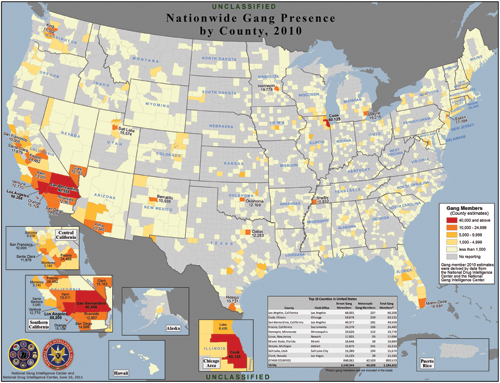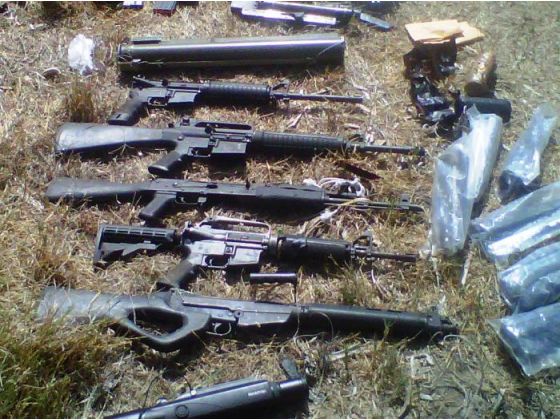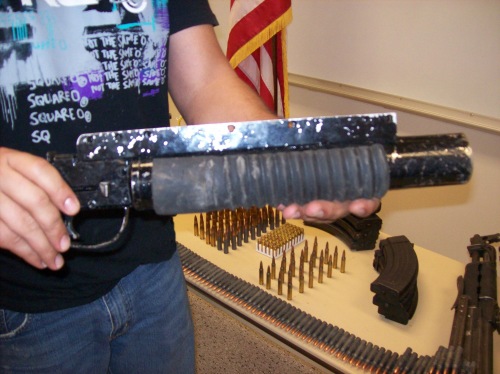Mexican Cartel Tactical Note # 7
Mexican Cartel Tactical Note # 7:
Los Zetas Three Vehicle (SUV) Commando Engages in Offensive Action in Northwest Harris County, Texas: Ensuing Fire Fight with US Law Enforcement
Key Information:
Via Dane Schiller, Houston Chronicle [1]:
The mission was supposed to be a textbook “controlled delivery” - a routine trap by law enforcement officers using a secret operative posing as a truck driver to bust drug traffickers when their narcotics are delivered to a rendezvous point.
Instead, things spun out of control. Shortly before the marijuana delivery was to be made Monday afternoon, three sport-utility vehicles carrying Zetas cartel gunmen seemingly came out of nowhere and cut off the tanker truck as it rumbled through northwest Harris County, sources told the Chronicle.
They sprayed the cab with bullets, killing the civilian driver, who was secretly working with the government. A sheriff's deputy, who was driving nearby in another vehicle, was wounded, possibly by friendly fire…
Sources discussed aspects of the shoot-out on the condition that they not be identified publicly due to the sensitivity of the ongoing investigation.
A contingent of law-enforcement officers had been covertly shadowing the truck as it eased its way through the Houston area to deliver a load of marijuana fresh from the Rio Grande Valley…
As the gunmen attacked, officers quickly jumped into the fray and also opened fire on the attackers. The truck kept rolling until it careened off the roadway and came to a halt.
Dozens of law-enforcement officers descended on the scene as well as fanned out in the surrounding neighborhoods.
Four suspects, all believed to be citizens of Mexico, were arrested and charged Monday with capital murder in connection with the shooting…
…The sheriff's deputy, who has not yet been identified publicly, was hit in the knee during the melee, which involved several cars and guns…
Authorities would not discuss how the deceased driver, who in addition to being a confidential informant and holding a job as a commercial truck driver, first made contact with the traffickers….
…While some of the arrested attackers have allegedly admitted to an affiliation with the Mexico-based Zetas, authorities said they are trying to determine why such a bold and risky attack was launched over just 300 pounds of marijuana…
A 3:01 minute news video concerning the incident can be accessed via:
http://abclocal.go.com/ktrk/story?section=news/local&id=8439923 [2].
Who: Los Zetas’ personnel (Three Mexican nationals captured—two from Neuvo Laredo; Eric De Luna, 23; Ricardo Ramirez, 35 and Rolando Resendiz, 34; one other individual— Fernando Tavera, 19).
See primary source for booking photos [1] and another source for prior convictions and charges via court documents [7]. Other Zetas’ personnel are thought to have fled the incident scene. Three SUVs (a Black Lincoln Navigator was recovered at the scene) were utilized.
What: Planned multi-agency law enforcement ‘controlled delivery’ using a confidential informant driving a 18-wheeler tanker truck with 300 lbs of marijuana interdicted by Los Zetas’ commando with ensuing fire fight. Confidential informant killed, undercover Harris county sheriffs deputy wounded (HCSO), and four Zetas captured.
When: Monday afternoon, 21 November 2011.
Where: On Hollister Drive near Bourgeois Road in Northwest Harris County, Texas (near Houston) [6].
Why: Unknown; theories include the targeted killing (assassination) of the confidential informant and that a rip-off crew was assembled to steal what was thought to be a much larger load of marijuana. Another possibility is that the load was targeted because it was operating on Los Zetas turf and those associated with it had not paid local protection money (plaza taxes).
Tactical Analysis: This is a significant event and represents an escalation in cross border violence. According to Javier Pena, the new head of the U.S. Drug Enforcement Administration’s Houston Division, “Everybody is surprised at the brazenness…We haven’t seen this type of violence, which concerns us.” [1].
Given that the truck cab was sprayed with bullets it can be assumed that some of Los Zetas personnel carried semi-automatic rifles. No mention of individual body armor, vehicular armor, or actual weapons carried has been disclosed. All captured Zetas had military style (short) haircuts with no tattoos evident in the booking photos so unit discipline is noted. US law enforcement presence was significant when the Los Zetas offensive action took place and was augmented with dozens of responding officers. Under other circumstances, the three vehicle (SUV) Los Zetas commando’ could have potentially overwhelmed one or two responding police units if a ‘controlled delivery’ law enforcement operation had not been taking place.
Of additional concern are three other cross border homicide incidents recently mentioned in press reports. Concerning the first incident, a federal grand jury indictment (now sealed) stated that US Border Agent Brian A. Terry was killed in Mesquite Seep, Arizona, by an offensive patrol—“with the intent to ‘intentionally and forcibly assault’ Border Patrol agents”— composed of five illegal Mexican immigrants [3]. At least two of these individuals carried AK-47 semi-automatic rifles at ready position (barrel down at 45 degree angle/gun butt in shoulder)— in a meeting engagement on 14 December 2010 at 11:15 pm. The two AK-47s have been traced back to the failed BATF ‘Fast and Furious’ operation [3]. The Peck Canyon area is a well-known human and drug smuggling route. Which Mexican cartel, or drug gang the offensive narco unit was associated with was not disclosed. The second incident took place in Hidalgo County, Texas on Sunday 30 October 2011 during a traffic stop. Deputy Hugo Rodriguez was shot by David Gonzales Perez, a Gulf cartel contractor, in the chest and abdomen. Perez and another cartel operative had kidnapped two individuals who purportedly knew where over a thousand pounds of stolen Gulf cartel marijuana had been stashed. Perez was killed in the ensuing gun battle with the wounded deputy and his partner [4]. The third incident took place on Monday 21 November 2011 about 20 miles northwest of the border city of Nogales, Texas in the Devil’s Canyon area of the Tumacacori Mountains. Three men, two of which have been identified as Mexican nationals, were found dead, shot in the head execution style. The bodies had lain in the area for up to two weeks. The executed men are suspected of being drug traffickers [5].
Taken together these four very violent incidents represent more ‘data points’ for Mexican cartel cross border incursion tracking. More importantly, at the officer safety level, two of these incidents suggest that US law enforcement officers should expect to engage Cartel foot soldiers armed with AK-47 semi-automatic rifles as standard issue weapons (at a minimum). The 7.62mm armor piercing round of the AK-47 will defeat standard issue US law enforcement body armor. Further, as in the Brian A. Terry homicide incident, the US law enforcement officers initially fired back using shotguns with less-than-lethal beanbag loads. While the agents carried fully loaded side arms (with 2 additional magazines), the AK-47s are far superior militarily (in regards to rate-of-fire, penetration, and range) than the policing weapons. Additionally, the cartel tactical units/personnel initiated offensive actions against US law enforcement personnel in three of these highlighted incidents. For this reason officer safety, and military-like force protection, training will become increasingly relevant for law enforcement personnel deployed in areas of operation (AOR) containing Mexican cartel tactical units.
Significance: Cartel Tactics; Cross Border Incursion; Force Protection; Officer Safety
Source(s):
1. Dane Schiller, “Zeta soldiers launched Mexico-style attack in Harris County.” Houston Chronicle. Updated 11:27 p.m., Tuesday, 22 November 2011, http://www.chron.com/news/houston-texas/article/Zeta-soldiers-launched-Mexico-style-attack-in-2283370.php.
2. Houston (KTRK), “Sheriff's deputy shot, informant killed in undercover operation gone bad.” ABC News. Tuesday, November 22, 2011, http://abclocal.go.com/ktrk/story?section=news/local&id=8439923. Related videos appear at end of the news video.
3. Jerry Seper, “Armed illegals stalked Border Patrol: Mexicans were ‘patrolling’ when agent was slain, indictment says.” The Washington Times. Tuesday 22 November 2011, http://www.washingtontimes.com/news/2011/nov/22/armed-illegals-stalked-border-patrol/?utm_source=RSS_Feed&utm_medium=RSS.
4. Erika Flores, “Sheriff confirms deputy was shot in ‘spillover’ violence incident.” Valley Central.com. Monday 21 October 2011, http://www.valleycentral.com/news/story.aspx?id=681024. See the Action-4 2.25 minute video.
5. Reuters, “Three Killed ‘Execution Style’ at U.S.-Mexico Border.” The New York Times. Tuesday 22 November 2011,
6. Action 4 News Staff, “Valley ties reported in deadly Zetas ‘attack’ near Houston.” ValleyCentral.com. 23 November 2011, http://www.valleycentral.com/news/story.aspx?id=690057.
7. Christopher Sherman, “4 charged with capital murder in Houston attack on drug load watched by law enforcement.” The Republic. 23 November 2011, http://m.therepublic.com/view/story/a6fbb36bed5645288c7f2c4acbd84267/.
Background Note
Graham H. Turbiville, Jr., “Firefights, raids, and assassinations: tactical forms of cartel violence and their underpinnings.” Robert J. Bunker, ed., Narcos Over the Border. London: Routledge, 2011: 123-144.



